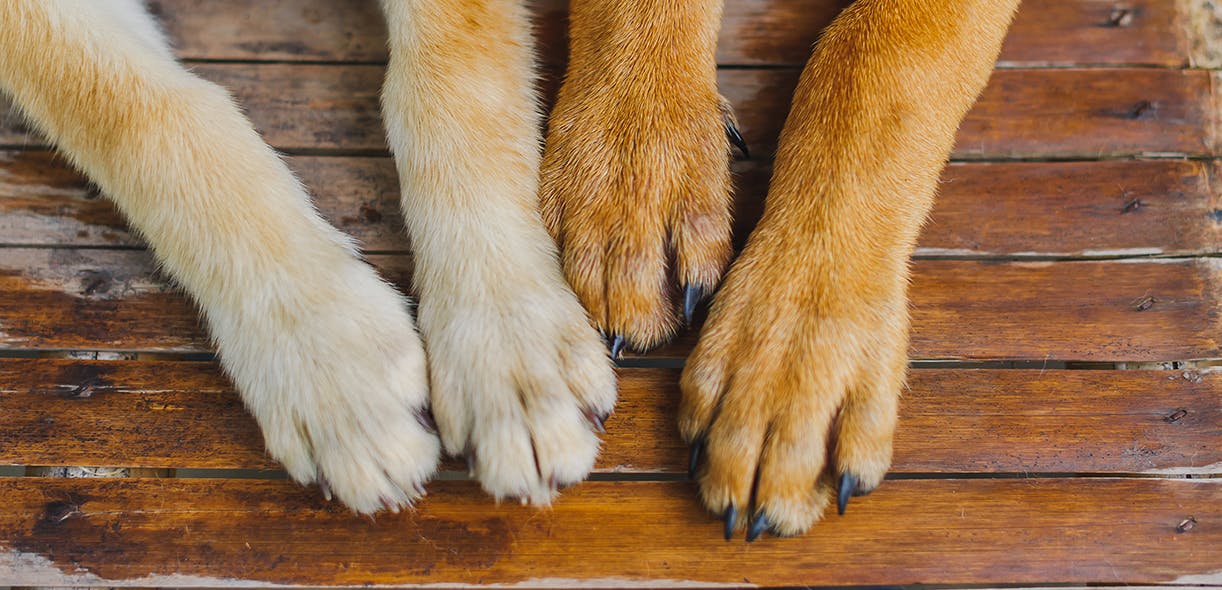These days, veterinarian Bertrand Lussier is busy closely following the progress of five of his canine patients. They remain anonymous for the time being as the treatment they are undergoing is still in the experimental stage. Not only could a positive outcome be a game-changer in treating canine osteosarcoma, but it could also revolutionize human medicine.
Osteo-what?
Osteosarcoma is the most common bone cancer in dogs, which is most frequently localized in the distal radius (the largest bone of the forearm) in large-breed dogs. It causes pain, limping and an increased risk of bone fracture.
Some dogs with osteosarcoma may avoid amputation by receiving an implant. However, complications—such as infection, cancer recurrence, and breakage of the bone or the implant during surgery—occur in more than 80% of cases.
Leading-edge technology
Dr Bertrand Lussier, researcher and professor at the Université de Montréal, decided to address this issue by enlisting the help of a team of researchers to conceive an alternative to the standard prosthesis which is currently only offered in two forms:
“I wanted to create a prosthesis that could be tailored to each individual dog, rather than hoping that canine morphology would adapt itself to a single prosthesis."- Dr Bertrand Lussier
Back in 2014, when Vladimir Barilovski, an engineer and colleague, asked Dr Lussier how 3D printing could help veterinary medicine, he immediately saw an opportunity to turn his idea into reality. Together, they created a protocol that, up to this point, seems promising. To create a suitable prosthesis for a sick dog, our experts start by scanning its two front legs. Then, using a “mirror” image of the healthy bone, they design a custom implant which follows every curve of the bone to be cut. The implant is affixed to a plate with 18 holes which is used to screw it into place on the radius and the metacarpal bones. Once the prosthesis is “drawn”, it is sent to a 3D laser printer where it is etched in titanium. A surgical template is also etched in plastic which guarantees that the cut made in the affected portion of the bone (about 50% of the radius) is identical to the one that was modeled virtually. In this roundabout way, the surgical procedure is made much simpler.
After the surgery, the dog must remain hospitalized for a few days (with a lightly bandaged leg) and receive medication (analgesics and antibiotics, as needed). The procedure is also followed up with chemotherapy. The dog—whether its leg was amputated, grafted or received no treatment—has a life expectancy of about 6 months once diagnosed. However, a dog can live a year if it undergoes chemo.
Even if the prosthesis doesn't help extend the dog's life, it certainly provides the dog with a better quality of life for its remaining days."
An exciting pilot project
The pilot project, which is the subject of an experimental study that started in 2017, includes five dogs and is progressing very well, according to Dr Lussier. “My fellow surgeon, Bernard Séguin from Colorado State University, performed each of the grafts. We are seeing that our method is shortening the procedure considerably. With the standard implant, it took a good two hours to perform the surgery. With ours, we're talking maybe 35 minutes,” he says.
Not to mention that this new endoprosthesis is much more versatile. “One of the dogs we operated on had a tumour that went very far up the bone. So we designed a special model just for him, one that we screwed into other bones. Moreover, when the bone is fractured, our technology allows us to create a porous prosthesis which helps promote osseointegration.”
Implications for human health
Based on their prognosis, all the dogs treated by Bertrand Lussier's team will eventually die of cancer. However, for the time being, each one of them is doing well.
“The whole idea behind our project is to reduce complications related to the surgery,” says Dr Bertrand. “But we also wanted our technology to be affordable. In the event that our procedure is made available to the general public, we will make sure that the cost to owners is similar to that of the current method. We're not looking to make money, we just want to improve the quality of life of those sick dogs!”
And not just dogs. Down the road, it may be possible for a version of Dr Lussier's endoprosthesis to also be used in human medicine. “We still have work to do, that's for sure, but we are nevertheless currently talking to orthopedists about another pilot project. Many health experts boast advocating the “One World, One Medicine” approach—working together to collectively help animals, humans and the environment... But we're looking to put our money where our mouth is and are actually doing it!”
It's an inspiring venture. We'll keep you posted on future developments.
